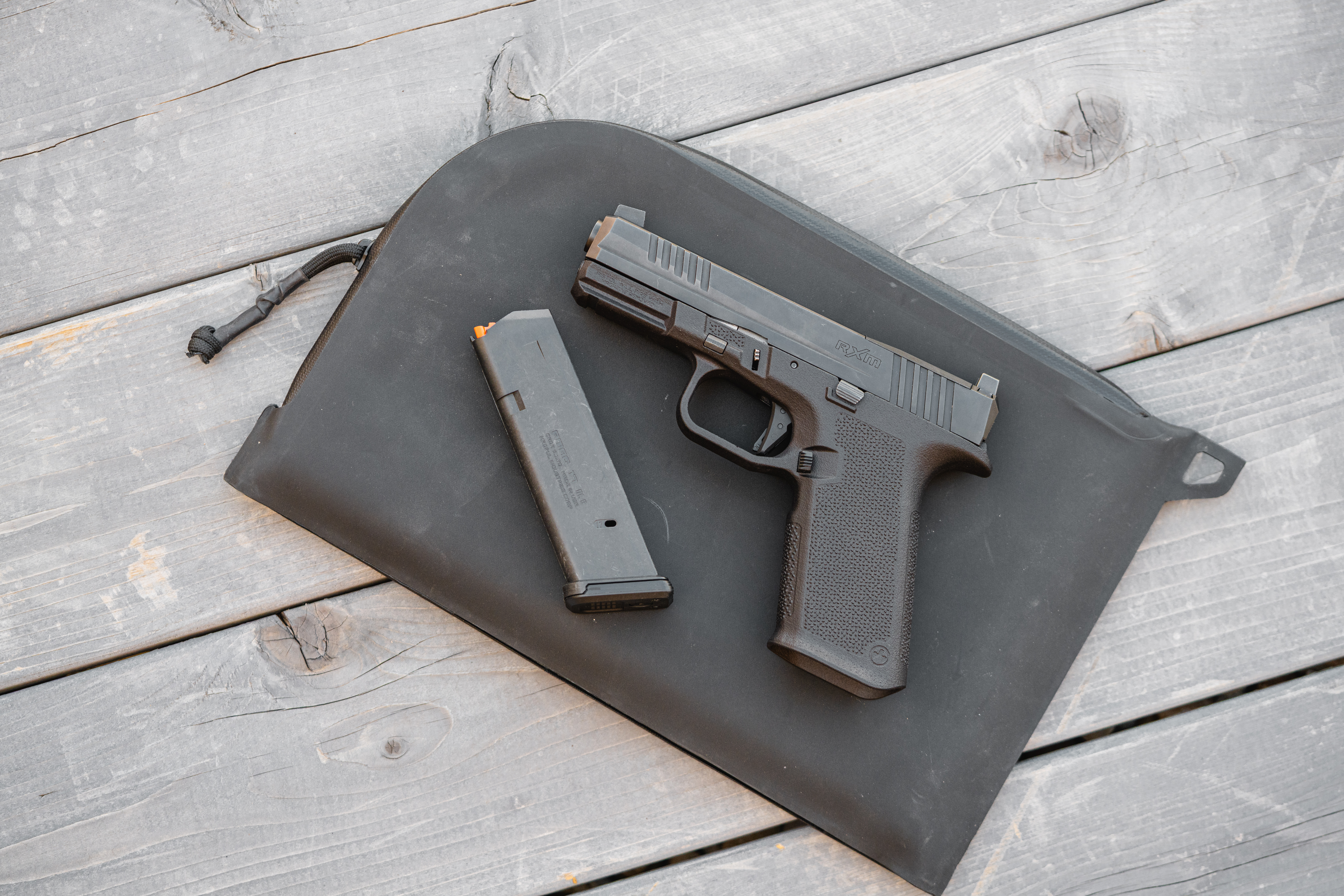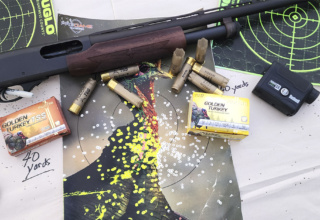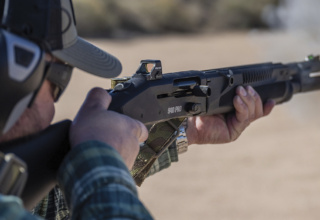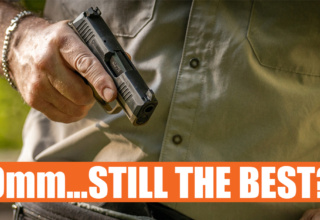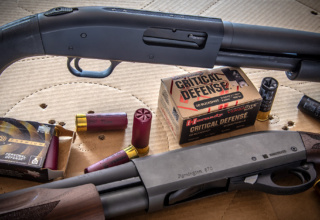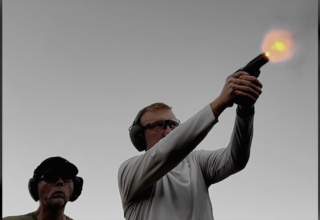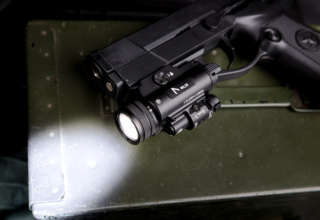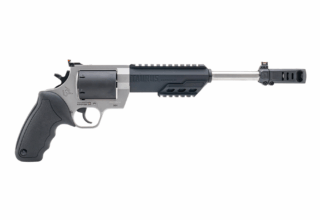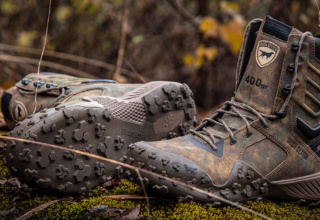This mighty big revolver runs a mighty small payload, but don’t think for a minute that the Ruger Super RedHawk in .22 Hornet doesn’t punch well above its weight class
by Larry Case
In an age where it seems there is a new caliber or some new whirly-gig to put on a gun thrown at us every other week, Sturm, Ruger & Co. has ignored the trend and not followed the crowd. The Ruger Super RedHawk, for example, has long been known for handling big, heavy calibers — the .454 Casual and the .480 Ruger (the first cartridge developed by Ruger), to name a couple. This time, though, Ruger went the other way and chambered this beast of a revolver in the venerable .22 Hornet.
The .22 Hornet? Really?
The first question many will ask here is, “Why the .22 Hornet?”
This is a fair question but to that I say, “Why not?” I get the feeling that some of the decision makers at Ruger may have felt the same way. The Super RedHawk is a classic, tried-and-true revolver that earned its bones years ago. The same could be said for the .22 Hornet. So, why not pair the two?
It would seem that a little walk down memory lane with the .22 Hornet is in order. There is no doubt the .22 Hornet has some age on it, but is that a reason to discount this versatile little missile? I think not. You wouldn’t dismiss the Colt 1911 pistol, the .30/06 Springfield, or the .45-70 because they are a little long in the tooth, would you? Maybe you see my point.
.22 Hornet Backgrounder
The .22 Hornet, like many other great rounds, started out with some gun gurus fiddling with other cartridges. Way back in the 1920s, a group at Springfield Armory began tinkering with the .22 WCF, which at the time was a black powder cartridge. This group, which included none other than Capt. Grosvenor Wotkyns and Col. Townsend Whelen, soon produced the .22 Hornet, for which Winchester began making ammo commercially in 1930.
In a bit of amazing gun lore trivia (to me), Winchester started making ammunition for the .22 Hornet almost three years before any rifle was made to shoot it. Savage brought out the Model 23-D chambered for the Hornet in late 1932 and a few months later Winchester trotted out the Model 54 in 1933 — a classic.
The Hornet was instantly popular as a small caliber, fast bullet, very accurate round. The .22 Hornet became the darling of varmint hunters for anything from woodchucks to coyotes and prairie dogs. While using rifles for turkeys is more controversial now (and illegal in many states), back in the day, the .22 Hornet was touted as a wonderful turkey gun. The turkeys, not knowing that you shouldn’t use the little .22 Hornet to hunt them, would expire quickly after being shot with the Hornet.
When talking about the .22 Hornet, the issue of using it for whitetail deer has always been a “thing.” Even in the old days, many rifle pundits dismissed the Hornet as too light for deer hunting.
At the same time, some shooters pronounced this round as fine for taking deer…with limitations. These limitations included staying within the effective range of the .22 Hornet — maybe 150 yards or less — plus making sure of correct bullet placement (always a factor with any cartridge) and using a proper bullet for hunting. This means an expandable bullet intended for hunting and not a full metal jacket variety. As a last comment on this, I would say that I know deer hunting families that have taken many whitetails with the .22 Hornet.
The Super RedHawk Spin
As noted earlier, the Ruger Super RedHawk is a beast of a wheel gun. The revolver weighs in at just a hair over four pounds (66 ounces) and the Burris 2-7X32 handgun scope I installed on it added 13 ounces.
The Super RedHawk is a double action/single action revolver made of stainless steel. The cold hammer forged barrel is 9 ½ inches long with a 1:9 rifling twist rate. The Super RedHawk is made with Ruger’s patented optic mounts, which are integral and machined directly onto the barrel rib. This, to me, ensures a solid base for mounting a scope. The rings are included with the gun. Mind you, there is nothing wrong with the open sights mounted on the Super RedHawk. The fully adjustable rear sight is matched with a HiViz green front sight.
Ruger revamped the Super RedHawk a few years ago and all chamberings — whether the .454 Casual or the .22 Hornet — use Ruger’s triple locking cylinder system. This secures the cylinder on the bottom, front, and rear of the frame. The triple locking system ensures cylinder-to-chamber alignment. With extra metal in the sidewalls, the top strap, and the barrel mount, the Super RedHawk is a substantial piece of machinery. The cylinder on the .22 Hornet has an eight-round capacity and is unfluted, making it a big chunk of stainless steel.
I found the trigger pull on this revolver to be a bit heavy yet manageable. The single action trigger pull measured around 5 lbs., 3 oz., and the double action pull was 15 lbs., 2.4 oz. Considering that this gun is fresh out of the box, the trigger pull will likely ease up with wear. The grip is the Houge Tamer Monogrip with an internal recoil cushion.
Range Work
I will begin the field evaluation by starting with the conclusion: the Ruger Super RedHawk in .22 Hornet is a lot of fun to shoot! And why wouldn’t it be? You have a beefy revolver — over four pounds — with a bull barrel that’s almost ten inches long. When you team this with the mild recoil of the Hornet, you have something that is a joy to shoot because the recoil is almost nonexistent. Having said that, here are a few observations.
First, what we are shooting here is an old cartridge, but don’t think that it has any lack of pressure in the gun when fired. The SAMMI (Sporting Arms and Ammunition Manufacturers) listed pressure for the .22 Hornet is 44,000 psi, and for comparisons sake, the .44 Magnum is 36,000 psi. As diminutive as the Hornet may be, it is still a rifle cartridge and only the big boy handgun rounds like the .500 Smith and Wesson, the .454 Casual, the .480 Ruger, and the like have greater pressures. Without a doubt, the fortress-built Super RedHawk is absolutely up to handling these pressures. I am merely noting that you will feel some of this pressure standing to the side of someone shooting the .22 Hornet Super Redhawk. It was the first thing I noticed when I was introduced to the gun at Industry Day on the Range at SHOT Show over a year ago.
Next, it should go without saying that you want to wear eye and ear protection when shooting any firearm. The Super Redhawk is a revolver and as tight as tolerances are for the chamber meeting the cylinder (and they are tight), you will sometimes get blowback and debris, but shooting the Hornet in this respect is nowhere near shooting the big magnums. If you have shot a lot of revolvers, as I have, it is not a big deal. Wear your eye and ear protection and you will be fine.
I shot the Super RedHawk from a bench, resting the gun on a Caldwell Shooting Bag. As solid as this is, you will still get some wiggle on the gun from the shooter. The Ruger was as accurate as I suspected it would be, and after some initial sighting in with the Burris scope, I was getting hole-touching groups at 50 yards. At 100 yards, I was happy with a little less than 2-inch groups. I truly believe the Hornet would have shot better than this if I could have overcome the aforementioned shooter-related wiggle. All of this was done with the Hornady Varmint Express 35-grain V-Max bullet load.
A Hunting Gun
As far as a varmint cartridge, I have always thought that the .22 Hornet, within its range, is just about perfect for various critters considered to be “varmints.” Woodchucks, raccoons, coyotes, prairie dogs, and other similar-sized animals are all good fare for the Hornet menu. What is within its range? I am saying 200 yards. Will the .22 Hornet shoot accurately past that mark? Yes. Will the round still have the speed and terminal ballistics necessary to take animals beyond 200 yards? Yes. But, for the purposes of this discussion, you must draw a line somewhere, and I think it is 200 yards. In truth, the Hornet is a little too much gun for squirrels, as I have pictured here, but it will certainly get the job done. I feel the same for the .22 HMR and the .17 HMR for squirrels — it’s just a little too much gun.
Now, back to that deer and turkey thing. Once again, within reasonable yardages, I have no problem with the .22 Hornet for whitetail deer. Not because I have done it a lot myself, but because I know of hunters who have done it for many years. Since we are talking about it here, I also know of one seasoned hunter in the Carolinas that usually carried a .22 Hornet rifle and routinely took hogs with it…big hogs. The turkey thing is similar. Within range and with proper bullet placement, there is no problem taking turkeys. Just make sure you check your local laws and regulations to see if the .22 Hornet is legal for turkeys.
The .22 Hornet joined with Ruger Super RedHawk revolver makes for a fun gun to hunt with. As noted earlier, the size of the gun coupled with the low recoil makes for an easy shooting experience. In the field, I supported the Super RedHawk with a Bog Death Grip tripod, and that seemed to work well. When not on the tripod, I went for the traditional rest on the side of a tree or in a low fork.
If you want a fun revolver to shoot varmints, metal target plinking, or even competition, and in a classic cartridge (which I hope makes something of a comeback), the Ruger Super Redhawk .22 Hornet is ready.











